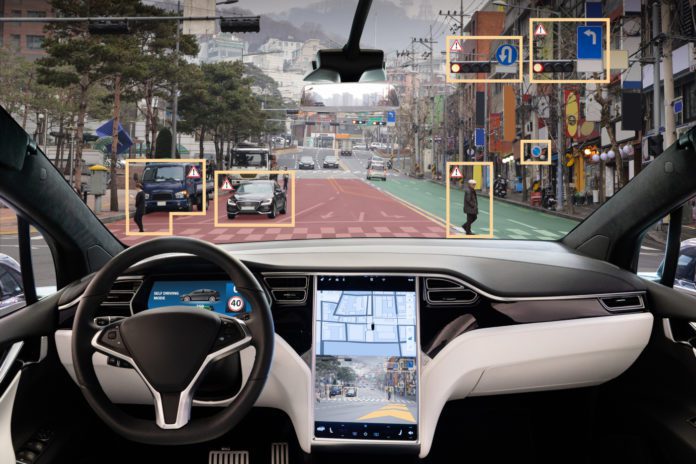The Internet of Things (IoT) in the automotive industry is probably at a more advanced stage than most other verticals. Car manufacturers have been putting sensors into cars for decades. With each passing year, they add more.
“From entertainment, situational awareness (e.g., instruments, status, health, performance, location, tracking), autonomous and semi-autonomous operation, vehicles are a hot spot of technology, and IoT is in the middle of it,” said Greg Schulz, an analyst at StorageIO Group.
“Many vehicles leave the factory with internet-capable devices pre-installed and partially activated with capabilities to unlock, lock, and remote start as well as alerts and diagnostics.
“In addition, those same devices can be used for enabling in-vehicle Wi-Fi hot spots for making calls, navigation, and other functions via your smart device.”
6 IoT automotive examples
In many ways, the automotive sector is driving IoT innovation that then bleeds down into other areas. Why? Vehicle sales are worth billions annually and carmakers are using the IoT to add features that differentiate their cars from the competition.
Let’s look at some ways IoT is being deployed in automotive today:
1. Advanced driver assistance systems (ADAS)
ADAS technology is being used by most vehicle manufacturers for collision avoidance, blind-spot monitoring, lane departure warnings, and park assist.
Synchronizing the operation of such systems, or sensor fusion, helps open the possibility of fully autonomous or self-driving vehicles that can monitor their surroundings and warn drivers of the potential road hazards and even take an evasive action to prevent a collision independently of the driver. If a driver is not present, the vehicle’s artificial intelligence (AI) can make optimal decisions.
2. Object recognition
Hamamatsu works with manufacturers to implement sensor technology, imaging, radar, and LiDAR (light detection and ranging) into advanced vehicles to help them differentiate and recognize objects ahead at high-speed conditions.
Using distance-gauging technology, the system must rapidly construct a 3D map up to a distance of about 100 meters as well as create high angular resolution imagery as much as a quarter mile in advance of the vehicle.
3. Real-time line visibility
Brembo, a maker of braking systems and components for cars, motorbikes, industrial vehicles, and machinery, works with PTC to add IoT into its processes and products.
The goal is to raise visibility into line operations, speed troubleshooting capabilities, and build uniformity and consistency into operations. To link legacy equipment and programmable logic controllers (PLCs) to modern systems, Brembo uses Kepware IoT technology to integrate disparate sources of data and provide real-time insights.
“The efficiency gains and real-time visibility helped Brembo save upwards of $1.5M in 2020,” said Alvaro Quiroga, operations manager at Brembo North America.
He also notes a decrease in scrap and re-work, enhanced quality, and better uptime and throughput through modernization efforts.
IoT innovations: 85 Top IoT Devices
4. Metal inspection
BMW is a big user of AI and IoT. It has an AI application in its metal pressing plant in which components for the car’s body are formed from boards. There, the BMW Group, together with Robotron Datenbank-Software, a specialist in industrial computer vision and IoT, developed a solution that eliminates potential deviations.
“Metal chips or oil residues that remain on the body parts after forming can easily be confused with very fine cracks,” said Michael Baling, head of the industry division at Robotron.
He added that AI and IoT differentiate flawless components and those with tiny errors, dust grains, oil drops, or cracks.
5. Quality control
Intel is helping Audi automate and enhance quality-control processes in its factories. By creating a data-driven platform, Audi can reduce human error, and cars are built with accuracy and precision.
At Audi’s factory in Neckarsulm, Germany, for example, 2,500 autonomous robots operate on its production line. Nine hundred of them carry welding guns to do spot welds. Audi assembles up to approximately 1,000 vehicles every day at the Neckarsulm factory, and there are 5,000 welds in each car — which equates to over 5 million welds in a single day.
To ensure the quality of its welds, Audi performs manual quality-control inspections.
“Audi pulls one car off the line each day and takes it to a large room, where 18 engineers with clipboards use ultrasound probes to test the welding spots and record the quality of every spot,” said Rita Wouhaybi, principal engineer for the IoT group and lead architect for Intel’s Industrial Edge Insights software.
Together with Audi, Intel created algorithms that take data from the welding-gun controllers and analyze it at the edge.
Intel’s data scientists developed a model based on electric voltage and current curves during welding. The system alerts technicians whenever it detects a faulty weld or a potential change in the configuration that could minimize or eliminate the faults.
“The value of putting the analytics platform at the edge is that it allows you to draw more data into it and look at correlations, causalities, and other interesting analytics,” said Brian McCarson, vice president of the IoT group at Intel.
“After making the initial platform investment, Audi can grow into it and scale it across facilities and to other use cases.”
6. Vehicle inspection
KAR Global, a seller of wholesale used vehicles, works with Ravin AI on AI-based vehicle inspections.
This provides the seamless flow of inspection information as well as data and images throughout the entire re-marketing lifecycle.
“Integrated inspection capabilities are core to our customers’ success in the new digital age,” said Peter Kelly, president of KAR Global.
“Ravin AI has developed computer vision, deep learning, and self-inspection solutions to accelerate and enhance the vehicle inspection process, helping our customers make smarter, more informed selling and buying decisions and achieve better outcomes.”
See more: Best IoT Platforms & Software



